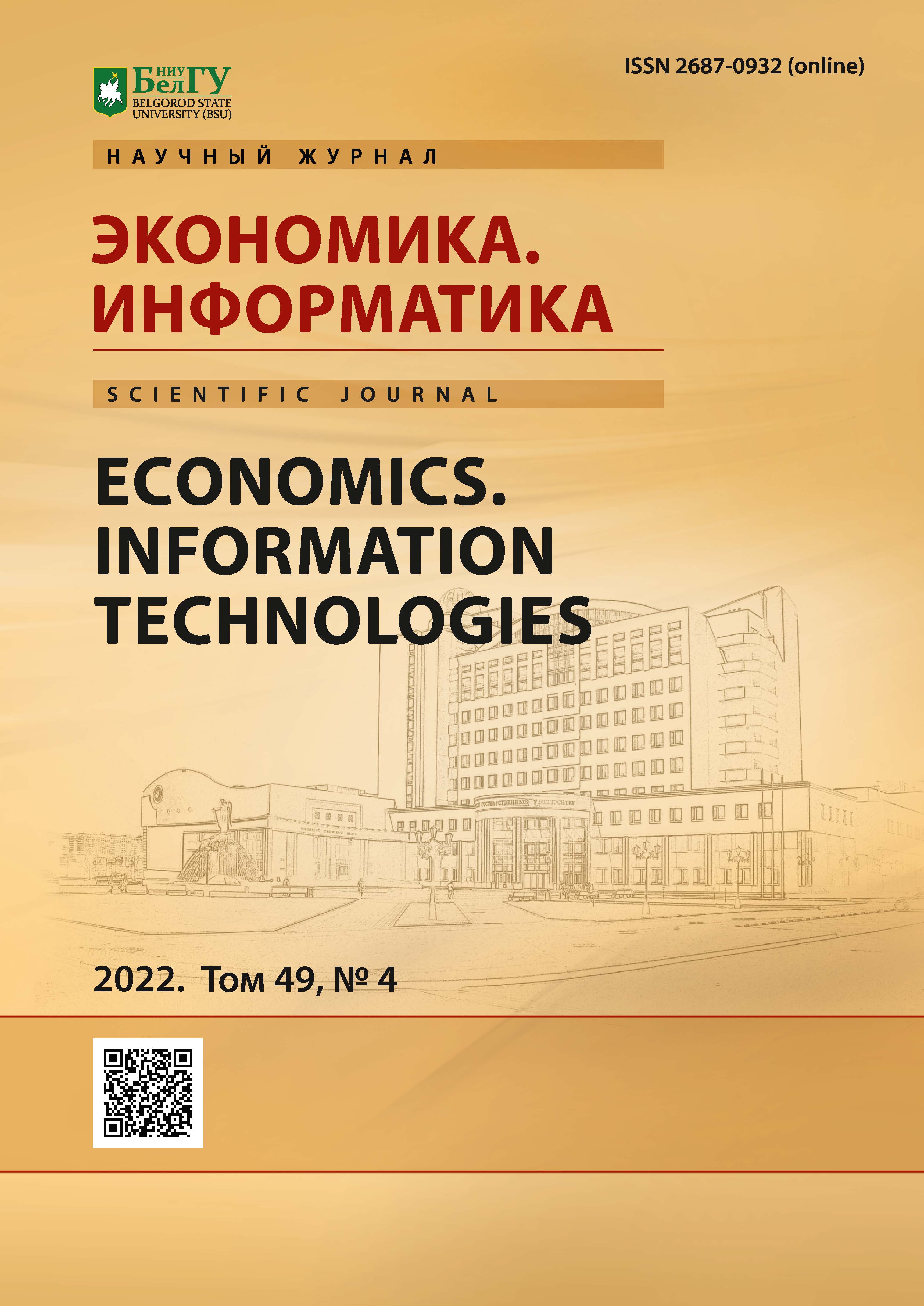Signal-Code Structures for Information Transmission with Minimal Adjacent Channel Interference
DOI:
https://doi.org/10.52575/2687-0932-2022-49-4-854-862Keywords:
wireless data transmission systems, channel signal, frequency bands, adjacent channel interference, orthogonal subband basis, Fourier transform, out-of-band energy leakageAbstract
The paper considers the mathematical foundations for the formation of an optimal complex orthogonal basis for a finite set of frequency ranges and methods for encoding and decoding a signal-code structure. The number of excluded frequency ranges can be unlimited and of various widths. The number of orthogonal vectors used is determined by the total width of the used channel. The results of comparative computational experiments on estimating the fraction of out-of-band radiation for different transmission frequency intervals are presented. The calculation results show the superiority of the complex orthogonal subband basis over orthogonal frequency multiplexing in the fraction of out-of-band energy leakage, while using eigenvectors with the maximum eigenvalue. The scalar product of eigenvectors shows the minimum level of mutual influence. Then there is the possibility of encoding and decoding signal-code structures with a high level of resistance to the effects of fluctuation noise during transmission.
Downloads
References
Afisiadis O., Cotting M, 2019. On the Error Rate of the LoRa Modulation with Interference. IEEE Transactions on Wireless Communications PP(99):1-1
Aiju T., Eldhose N., 2020. Chirp spread spectrum for narrow band long range bio sensor networks. International Journal Of Scientific & Technology Research Volume 9, Issue 01
Bouras C., Kokkinos V., Papachristos N., 2018. Performance evaluation of LoraWan physical layer integration on IoT devices. Global Information Infrastructure and Networking Symposium (GIIS)
Ferré G., Giremus A., 2018. LoRa Physical Layer Principle and Performance Analysis. ICECS 25th IEEE International Conference on Electronics Circuits and Systems
Ferreira A., Ortiz F., Henrique L., Costa M. K., Foubert B., Amadou I., 2020. A study of the LoRa signal propagation in forest, urban, and suburban environments. Annals of Telecommunications – annales des télécommunications
Gonzalez N., Bossche A., Val T., 2018. Specificities of the LoRa physical layer for the development of new ad hoc MAC layers. 17th International Conference on Ad Hoc Networks and Wireless, St Malo, France. pp.163-174
Jair A, Silva A, 2020. Theoretical and Experimental Evaluation on the Performance of LoRa Technology. DOI 10.1109/JSEN.2020.2987776
Joerg R., Tallal E., 2018. Closed Form Approximation of LoRa Modulation BER Performance DOI 10.1109/LCOMM.2018.2849718, IEEE Communications Letters
Rajni B., Pooja S., Javed A., 2012. Analysis of Chirp Spread Spectrum System for Multiple Access. International Journal of Engineering Research & Technology (IJERT), ISSN: 2278-0181, Vol. 1 Issue 3
Savaux V., Ferré G., 2021. Simple Asymptotic BER Expressions for LoRa System over Rice and Rayleigh Channels. Wireless Telecommunications Symposium, San Francisco (virtual), United States. hal-03200448
Staniec K., Kowal M., 2018. LoRa Performance under Variable Interference and Heavy-Multipath Conditions. Wireless Communications and Mobile Computing Volume 2018
Tallal E., Joerg R., 2018. Analysis of BER and Coverage Performance of LoRa Modulation under Same Spreading Factor Interference. IEEE 29th Annual International Symposium on Personal, Indoor, and Mobile Radio Communications (PIMRC)
Wang X., Fei M., Li X., 2008. Performance of Chirp Spread Spectrum in Wireless Communication Systems. Conference: Communication Systems ICCS 2008. 11th IEEE Singapore International
Викулов А. С., 2019 Модель межканальной интерференции в сетях IEEE 802.11 в задаче оценки пропускной способности. Радиотехнические и телекоммуникационные системы, no. 1 (33), 2019, pp. 36-45.
Викулов А. С., Парамонов А. И., 2018 Анализ основных видов помех в задаче планирования сетей wi-fi с высокой плотностью пользователей, Информационные технологии и телекоммуникации. 2018. Т. 6. № 1
Гришин И. В., 2009 "Алгоритм компенсации межсимвольной и межканальной интерференции в системах передачи с DMT" Информатика, телекоммуникации и управление, no. 6 (91), 2009, pp. 100-105.
Жиляков Е.Г., Урсол Д.В., Магергут В.З., 2012. Разработка нового способа формирования сигналов для систем доступа к широкополосным мультимедийным услугам. Научные ведомости белгородского государственного университета. серия: экономика. информатика. Издательство: Белгородский государственный национальный исследовательский университет, Белгород.
Калашников К. С., 2011 Алгоритм оценки интерференционных искажений при приеме OFDM-сигналов в условиях многолучевых каналов с замираниями. Вестник Московского государственного технического университета им. Н.Э. Баумана. Серия «Приборостроение», no. 4, 2011, pp. 92-100.
Мешкова А Г, 2018 Методы компенсации межканальных и внутриканальных интерференционных помех в системах связи с ортогональным частотным мультиплексированием. Диссертация на соискание ученой степени кандидата технических наук, Уфа 2018.
Урсол Д.В., 2012. Метод обеспечения помехоустойчивости информационных коммуникаций при субполосной передаче информации: дис. канд. техн. наук: 05.13.17 – Теоретические основы информатики. Белгород.
Abstract views: 396
Share
Published
How to Cite
Issue
Section
Copyright (c) 2022 ECONOMICS. INFORMATION TECHNOLOGIES

This work is licensed under a Creative Commons Attribution 4.0 International License.


